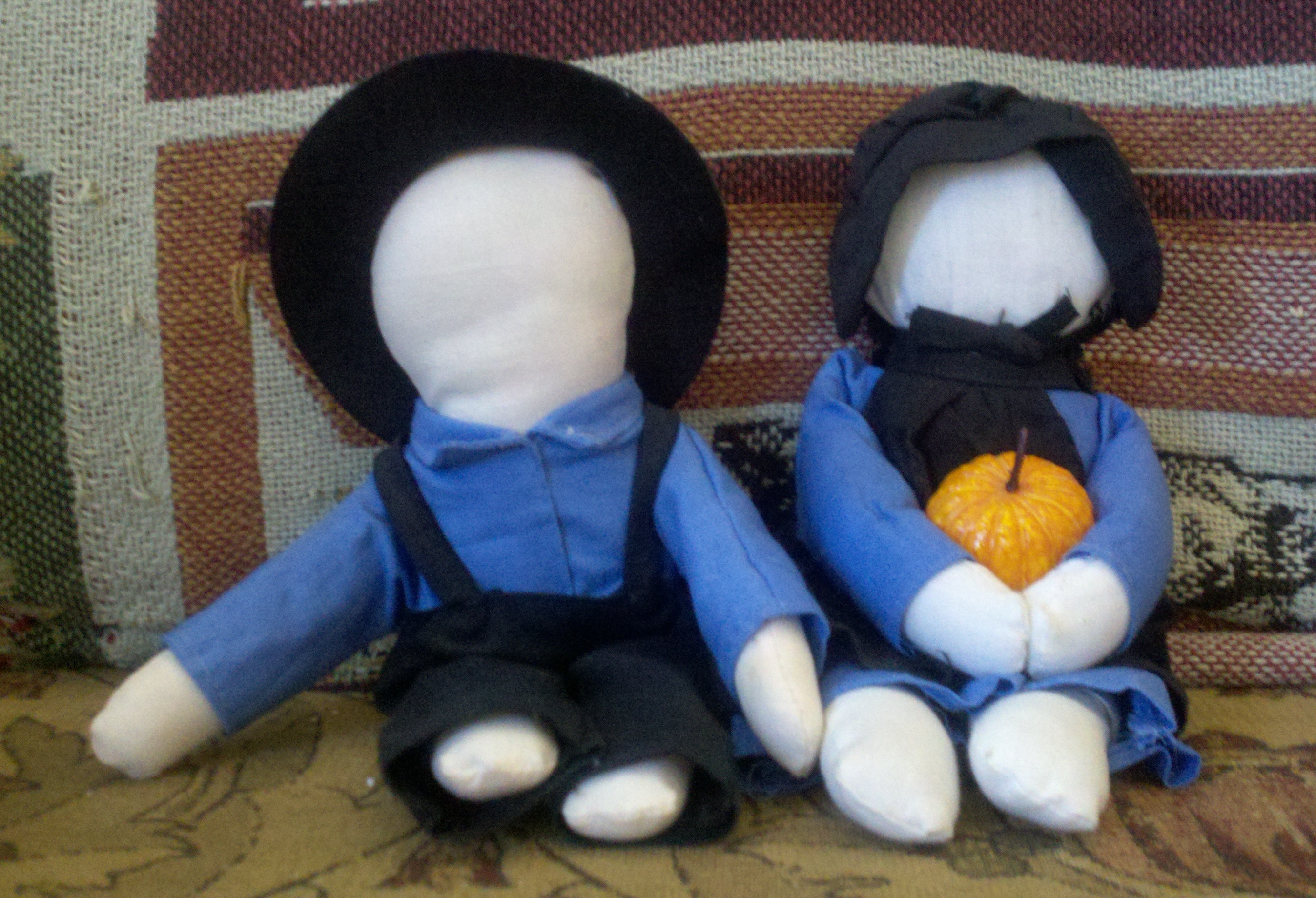Amish Dolls on:
[Wikipedia]
[Google]
[Amazon]
 Amish dolls are a type of rag doll and a popular form of American
Amish dolls are a type of rag doll and a popular form of American
 Amish dolls are a type of rag doll and a popular form of American
Amish dolls are a type of rag doll and a popular form of American folk art
Folk art covers all forms of visual art made in the context of folk culture. Definitions vary, but generally the objects have practical utility of some kind, rather than being exclusively decorative. The makers of folk art are typically tr ...
, which originated as children's toys among the Old Order Amish
The Amish (; pdc, Amisch; german: link=no, Amische), formally the Old Order Amish, are a group of traditionalist Anabaptism, Anabaptist Christianity, Christian church fellowships with Swiss German and Alsace, Alsatian origins. They are close ...
people. While some Amish dolls have faces, the best-known ones do not, to emphasize the fact that all are alike in the eyes of God.
History
There are several accounts of the origins of faceless dolls used by Amish children. One account says that a young Amish girl was given a rag doll with a face for Christmas. Her father became upset and cut the head off the doll. He reportedly said "Only God can make people." He then replaced the head with a stuffed stocking that did not have a face. The little girl played happily with the doll for many years. Some Amish children have wrapped blankets around small logs and pretended they were dolls. A sociological study from 2007 says that the dolls are left faceless because "all are alike in the eyes of God", and that the lack of facial features agrees with the Bible's commandment against graven images. Most Amish doll makers were anonymous. An exception was Lizzie Lapp (1860–1932) of Lancaster County, Pennsylvania, who sold her dolls under her own name. Similar dolls were made by members ofMennonite
Mennonites are groups of Anabaptist Christian church communities of denominations. The name is derived from the founder of the movement, Menno Simons (1496–1561) of Friesland. Through his writings about Reformed Christianity during the Radi ...
churches, a related religious group.
Characteristics
An Amish doll is best described as a plain rag doll usually lacking physical features of a face and hair. It is also thought that a face on a doll makes it appear more worldly, which is not considered acceptable among the Amish. Not all Amish dolls, however, are faceless. Clothing on Amish dolls is similar to that worn by Amish children. Both girl and boy dolls are common; Amish children do not have a lot of toys, so both boys and girls play with the dolls. Fabrics are all solid colored. The doll body is commonly made from white or cream fabric, such as unbleachedmuslin
Muslin () is a cotton fabric of plain weave. It is made in a wide range of weights from delicate sheers to coarse sheeting. It gets its name from the city of Mosul, Iraq, where it was first manufactured.
Muslin of uncommonly delicate hands ...
, since the materials traditionally used to make the dolls are remnants from clothing made for family members. Faces were often made of oilcloth
Oilcloth, also known as enameled cloth or American cloth, is close-woven cotton duck or linen cloth with a coating of boiled linseed oil to make it waterproof.
Manufacture
Boiled linseed oil was prepared by a long boiling of linseed oil with m ...
. The stuffing was traditionally rags, but usage of cotton, or in modern days polyester batting, is also common.
The dolls themselves may be sewn by hand or machine. Machine sewing in the Amish community is generally done by using a foot-operated treadle sewing machine. On older Amish dolls, it is not uncommon to see several layers of cloth on the head or body of one doll. When a doll became too dirty or badly worn, the head as well as its arms and legs would be completely covered with fresh cloth.
Antique Amish dolls made for and used by Amish children are highly collectible and can sell for upwards of US $1,000. However, reproductions made to deceive have proliferated, depressing the market.
Tourist market
Wide interest in collecting Amish crafts began in the 1930s, and in 1939, Cornelius Weygandt, a professor at theUniversity of Pennsylvania
The University of Pennsylvania (also known as Penn or UPenn) is a private research university in Philadelphia. It is the fourth-oldest institution of higher education in the United States and is ranked among the highest-regarded universitie ...
, described his collection of Amish and Mennonite
Mennonites are groups of Anabaptist Christian church communities of denominations. The name is derived from the founder of the movement, Menno Simons (1496–1561) of Friesland. Through his writings about Reformed Christianity during the Radi ...
dolls, praising the "painstaking fidelity" of their costumes. National advertisements for Amish dolls appeared in '' House & Garden'' magazine in 1941. These dolls, however, had faces. As tourism increased over the decades, faceless dolls have frequently appeared in souvenir shops near Amish communities. In 1955, John A. Hostetler, an expert on Amish society, described the marketing of dolls to tourists as an aspect of the commercialization of Amish culture.
References
{{Amish Doll, Amish Handicrafts Traditional dolls Rag dolls